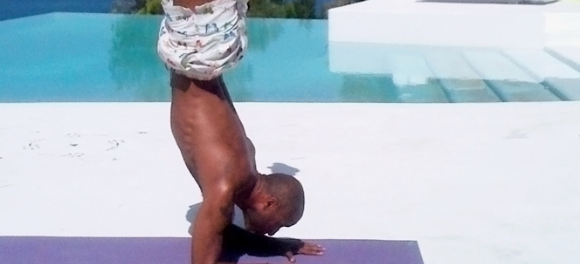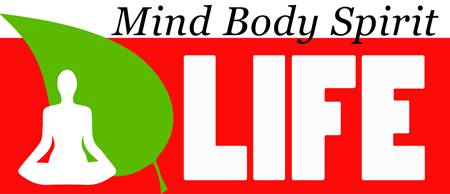How Yoga Can Improve Your Life As Well As Your Sport

Today I want to speak to you about the benefits of yoga and stretching on your sport as well as your life.
I played a lot of sport growing up and then at 19 gave it all up to become a professional dancer. At the age of 28 I moved back to Sussex and began playing football and cricket again after 9 years of not playing and found my increased flexibility had really helped with sport. I did not start yoga until I was over 40 and now I am just about to turn 50 I find I can still do a lot of the things I could do when I was a lot younger.
Stretching exercises and yoga are somewhat synonymous. Yoga practices include stretching movements. But you can do stretching activities without them being yoga poses.
“Not only is yoga excellent for flexibility, but it is also a great tool for longevity and injury prevention, as it allows for internal body awareness.” – Kyle Shewfelt
Stretching is the deliberate lengthening of muscles to increase muscle flexibility and joint range of motion. Stretching activities are an important part of any exercise or rehabilitation programme. They help warm the body up prior to activity, decreasing the risk of injury, as well as muscle soreness.
The benefits of stretching are many, and well proven. Stretching benefits people of all ages.
Flexibility
Improved flexibility and how much a muscle lengthens, is a key benefit from stretching and yoga movements. Everyday tasks, like tying your shoes, reaching for items in cabinets and lifting objects can become easier. Similarly, muscle coordination can improve with regular stretching and yoga practice. All of these benefits become even more important as you get older, because muscles naturally become tighter and shorter. Yoga and stretching are ways to keep those muscles loose and limber.
Range of Motion
Stretching and yoga can keep the body’s joints, tendons and ligaments lubricated. That improves range of motion, which allows more mobility and agility. You have better balance and are less likely to fall and injure yourself. These benefits are important at any age, but especially critical as you get older.
Better Circulation
With stretching and yoga activities comes better circulation throughout the body, including to the joints and muscles. This yields quicker healing of any muscle.
Pain Relief
Stretching and yoga can provide relief from back pain and arthritis. For lower-back pain, stretching the quadriceps and hamstrings, as well as the hip and pelvis muscles, can contribute to relief. Stretching and yoga can also ease headache pain by improving circulation and oxygen flow to the head.
Relaxation
Stretching and yoga can be antidotes to stress. They ease and loosen tight muscles and offer a sense of well-being and tranquility. In addition to the physical ways these exercises can provide benefits, the mental calm also contributes to relaxation. Some people have used yoga to cope with issues like anxiety and depression.
Improved Posture
Better posture is another benefit to yoga and stretching. Tight muscles can contribute to bad posture. But stretching those muscles can improve back alignment and help posture. Chronically tense and tight muscles contribute to poor posture, which in turn can affect the functioning of our internal organs, not to mention our appearance. Stretching the muscles of the lower back, shoulders and chest can help keep the back in better alignment and improve posture.
Reduce or Prevent Lower Back Pain
Greater flexibility and range of motion in the hamstrings and muscles of the hips and pelvis help to reduce the stress on your spine that causes lower back pain.
 Enhanced Coordination
Enhanced Coordination
Maintaining the full range of motion through your joints keeps you in better balance. Coordination and balance will help keep you mobile and less prone to injury from falls, especially as you get older.
“I never struggled with injury problems because of my preparation – in particular my stretching.” – Edwin Moses
“I believe that yoga is one of the reasons that I was able to play as long and as healthy as I did,” states Kareem Abdul-Jabbar. He goes onto say “Yoga is somewhat hard to quantify in terms of benefits because you see them in all the injuries you don’t get.”
Many consider Kareem Abdul-Jabbar to be the greatest center and maybe the greatest player, in basketball history. He played for the NBA’s Milwaukee Bucks and Los Angeles Lakers from 1969 to 1989, Abdul-Jabbar won six NBA championships and a record six regular season MVP Awards.
“For me I noticed improvement in my posture – that was key for me because I had been having lower back problems,” Abdul-Jabbar states. “After I started doing yoga positions – asanas — all that changed. My health greatly improved overall.”
Abdul-Jabbar became interested in yoga breathing during his first year of high school. Not until 1976 did he actively begin doing asanas. Today, the NBA’s all-time leading scorer does some kind of yoga or stretching five or six days a week. His son even teaches yoga.
“I do Bikram yoga and a number of other styles too,” Abdul-Jabbar says. “People who tend to get into yoga often do what I call a ‘yoga tour’ — trying different styles and techniques. Eventually you find the one that is your niche.”
Ryan Giggs is the most decorated player in English football history. He played in over 1,000 professional games. Including 963 appearances, 168 goals and 34 honours for Manchester United. That’s a long and very successful career for any sort of sportsman.
Giggs puts his sporting longevity down to yoga.
Sacrifice and savvy characterised the second section of his career bisected by a 2001 training session before a Champions League tie at Bayern Munich. On-song and relishing the game ahead, Giggs suffered a recurrence of regular hamstring injuries which from the very start punctuated his career. That night in Munich sparked the winger to change approach not only to football, but life.
New car, new bed, new diet, new fitness regime. He adopted an entirely open mind to anything that might improve his game and discovered yoga.
The mattress was the easy bit and the car, after a little soul-searching, relatively straightforward. (Giggs settled for a Mercedes 500, rather than buy a new sports car each year, with the stiff clutches that put extra stress on his left leg and hamstrings.) But the yoga was something he hardly knew was there. A yoga practitioner, remembered only as “Louise” by United players of the time, had started work a fortnight earlier at the club’s new Carrington training complex. “The physio had brought her in,” Giggs recalls. “I was just looking at any angle so I just wandered over to her, talked to her, told her my problems and she just said: ‘Yeah, come next week then.'”
Giggs wasn’t the only intrigued United player. Roy Keane, Gary Neville and Mikaël Silvestre all started yoga at about the same time in the hope that muscular suppleness might extend their careers. Silvestre may be the less illustrious player of that quartet, but the relish with which he took to the discipline was typical of the French players who have always been years ahead of the British in this field.
“Mikaël was like a yoga teacher,” Giggs says. “Foreign and British players have the same approach to coming in and doing yoga. But, from my experience, you see players who come from France they have got better flexibility because they are taught to stretch; it’s a massive part of their game from a young age. They have just got more flexibility, or they seem to. It’s part of what they do – whereas British players stretching is just something that you either do wrong or you are sat around pretending to stretch, having a chat just before you go out to train.”
“The yoga definitely helps me,” Giggs said. “Yoga helps me train every day because it gives me the flexibility and the strength not only to play the game, but to train as well.”
Benefits of Yoga for Athletes
Yoga can provide many proven health benefits, including:
Increasing flexibility and range of movement
Increase Core Strength
Reducing stress
Reducing neck and back pain
Improve balance
Improvement in carpal tunnel syndrome
Increased circulation in patients with fibromyalgia
Improved respiratory function in asthma patients
Brent Rich, M.D., a Fellow of Sports Medicine at Michigan State University, suggests you look past the odd language and spiritual overtones of yoga’s devotees and take when you need out of the discipline: “I’m not sure if spirituality is the important part of yoga for an athlete.”
Indeed many yoga instructors freely admit that you can dispense with the philosophy if you like and still reap the benefits. It may help to think of yoga principles in Western terms: The controlled breathing is a proven stress-relieving technique; the stretching limbers up muscles and prepares them for sport; and the exercises tone and strengthen your whole body. Dr. Rich adds that the meditation used in some yoga is really nothing more than a means of eliminating all other forms of distraction so you can concentrate better. “You can think of something spiritual or you can just close your eyes,” he says.
Yoga-style stretching can benefit any athlete, but it is most valuable for preventing injuries in sports that require explosive activity, according to Tony Mahon, PhD an exercise physiologist at Ball State Human Performance Lab, in Muncie, Indiana. These include racket sports, power lifting, sprinting, basketball, volleyball, baseball, and any activity where a great deal of force is suddenly exerted by the muscles. Yoga and stretching is less essential prior to endurance activities like swimming, cycling or running, since athletes can begin these sports slowly, giving their muscles a chance to warm up before they really begin to push. “However,” adds Mahon, “stretching after a long workout can speed recovery and help get the athlete ready for the next session.”
Yoga also helps athletes get back on track after an injury. Physical therapists now routinely prescribe it for chronic back and muscular pain. “Yoga allows you to change old injurious posture habits,” says Mary Schatz, M.D., of the Centennial Medical Center in Nashville. “And by learning breathing and meditative techniques, you can begin to feel each muscle, recognize the early sensations of pain, and take action to reduce the stress on your body.”
“I guarantee that 10 years from now, yoga will be much more mainstream in the athletic world,” adds Joel Fish, Ph.D., executive director of the Center for Sports Psychology in Philadelphia.
7 Day Action Plan
1. Download Sun Salutation A exercise 1 of the Celebrity Training Secrets Workout Here
2. Perform 5 Sun Salutations everyday
3. Download Bruce Lee’s Favourite stretches Here
4. Perform Bruce Lee’s stretches everyday
“Be clear about your goal but be flexible about the process of achieving it.” – Brian Tracy
Breathe Believe and Achieve
Keep on Winning, Smiling and Living the Dream
Namaste,
Steve



